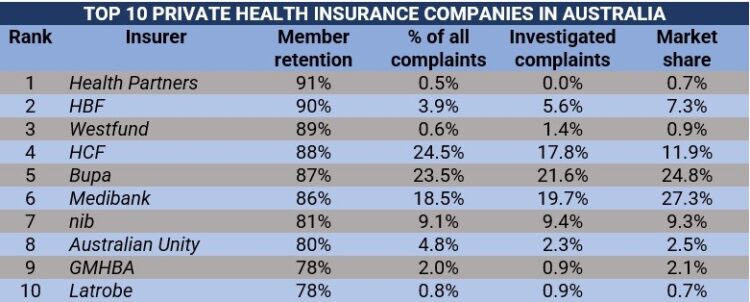
How much health insurance should you get? This question is crucial for individuals and families seeking financial security and peace of mind. Navigating the complex world of health insurance can be overwhelming, with various factors influencing costs and coverage options. From age and location to health status and plan type, understanding these key elements is vital for making informed decisions.
This guide delves into the intricacies of health insurance costs, exploring the different components that contribute to your monthly premiums, deductibles, copayments, and coinsurance. We’ll discuss various health insurance plans available, including individual, employer-sponsored, and government-funded options, comparing their benefits, limitations, and eligibility requirements. By understanding the nuances of health insurance, you can make confident choices that align with your healthcare needs and budget.
Factors Influencing Health Insurance Costs

The cost of health insurance premiums is determined by several factors, each playing a significant role in shaping the final price you pay. Understanding these factors can help you make informed decisions when choosing a plan.
Age
Age is a significant factor in determining health insurance premiums. As individuals age, they tend to have higher healthcare costs due to increased susceptibility to chronic illnesses. Insurance companies factor this increased risk into their pricing, leading to higher premiums for older individuals. For example, a 60-year-old individual may pay significantly more for health insurance than a 30-year-old, reflecting the higher likelihood of needing more extensive medical care.
Location
The cost of health insurance can vary considerably based on your geographic location. Factors like the cost of living, availability of healthcare providers, and the prevalence of certain diseases in a particular area can influence premiums. For instance, health insurance premiums in urban areas with high concentrations of specialists and advanced medical facilities may be higher compared to rural areas with limited healthcare access.
Health Status
Your health status is a crucial factor influencing health insurance premiums. Individuals with pre-existing health conditions, such as diabetes or heart disease, may be considered higher risk by insurance companies. This increased risk translates into higher premiums to cover potential future healthcare costs.
Coverage Level
The level of coverage you choose for your health insurance plan directly impacts the cost of premiums. Plans with comprehensive coverage, including a wide range of benefits and low deductibles, generally come with higher premiums. Conversely, plans with basic coverage and higher deductibles tend to have lower premiums.
Plan Type, How much health insurance
The type of health insurance plan you select also plays a significant role in determining premiums. For instance, HMO plans (Health Maintenance Organizations) typically have lower premiums compared to PPO plans (Preferred Provider Organizations). However, HMO plans may have more restrictive networks of healthcare providers, while PPO plans offer more flexibility but at a higher cost.
Understanding Health Insurance Premiums
Health insurance premiums are the monthly payments you make to your insurance company in exchange for coverage. Understanding the different components of your premium can help you make informed decisions about your health insurance plan.
Components of Health Insurance Premiums
The total cost of your health insurance premium is comprised of several components:
- Monthly Premiums: This is the fixed amount you pay each month for your health insurance plan. It is the most visible part of your health insurance cost.
- Deductibles: This is the amount you pay out-of-pocket for healthcare services before your insurance coverage kicks in. Once you meet your deductible, your insurance company starts covering a portion of your medical expenses.
- Copayments: These are fixed amounts you pay for specific medical services, such as doctor visits or prescriptions, after you’ve met your deductible.
- Coinsurance: This is a percentage of the cost of medical services that you are responsible for paying after you’ve met your deductible. For example, if your coinsurance is 20%, you will pay 20% of the cost of a medical procedure, and your insurance company will pay the remaining 80%.
Breakdown of Health Insurance Costs
Here is a table illustrating the breakdown of health insurance costs, including the components mentioned above:
| Component | Description | Example |
|---|---|---|
| Monthly Premium | Fixed amount paid each month for coverage | $300 |
| Deductible | Out-of-pocket expenses before insurance kicks in | $1,000 |
| Copayment | Fixed amount paid for specific services | $25 for a doctor visit |
| Coinsurance | Percentage of costs paid after deductible | 20% of medical procedure costs |
Factors Influencing Premium Costs
The cost of your health insurance premiums can vary significantly based on individual circumstances and plan choices. Here are some factors that can influence your premium costs:
- Age: Younger individuals generally pay lower premiums than older individuals, as they are statistically less likely to require expensive medical care.
- Location: Premiums can vary based on the cost of living in your area. Areas with higher healthcare costs tend to have higher premiums.
- Health Status: Individuals with pre-existing conditions may face higher premiums, as they are considered higher risk by insurance companies.
- Plan Type: Different health insurance plans have different levels of coverage and cost. For example, a high-deductible health plan (HDHP) will typically have a lower monthly premium but a higher deductible than a traditional health plan.
Examples of Premium Cost Variations
Here are some examples of how premium costs can vary based on individual circumstances and plan choices:
- Example 1: A 25-year-old healthy individual living in a low-cost-of-living area may pay a monthly premium of $150 for a basic health insurance plan with a $1,000 deductible.
- Example 2: A 60-year-old individual with a pre-existing condition living in a high-cost-of-living area may pay a monthly premium of $500 for a comprehensive health insurance plan with a $2,000 deductible.
Exploring Different Health Insurance Options
Choosing the right health insurance plan can be a daunting task, as numerous options exist with varying coverage features and cost considerations. Understanding the different types of plans available, their benefits, limitations, and eligibility requirements is crucial for making an informed decision. This section explores the major categories of health insurance plans, including individual, employer-sponsored, and government-funded plans, providing insights into their key characteristics and helping you determine the best fit for your needs.
Individual Health Insurance Plans
Individual health insurance plans are purchased directly by individuals or families, without being tied to an employer or government program. These plans offer flexibility and independence in choosing coverage options but often come with higher premiums compared to employer-sponsored plans.
- Coverage Features: Individual plans offer various coverage options, including comprehensive plans covering a wide range of medical services, high-deductible plans with lower premiums but higher out-of-pocket costs, and limited-benefit plans focusing on specific health needs.
- Eligibility Requirements: Typically, anyone can purchase an individual health insurance plan, regardless of employment status. However, pre-existing conditions may affect eligibility and premiums.
- Cost Considerations: Premiums for individual plans vary significantly based on factors like age, health status, location, and plan coverage. You can compare plans and choose the option that best suits your budget and healthcare needs.
Employer-Sponsored Health Insurance Plans
Employer-sponsored health insurance plans are offered by employers to their employees as a benefit. These plans often provide more affordable premiums and broader coverage compared to individual plans.
- Coverage Features: Employer-sponsored plans typically offer comprehensive coverage, including preventive care, hospitalization, and prescription drugs. They often include additional benefits like dental and vision coverage.
- Eligibility Requirements: Eligibility for employer-sponsored plans is usually based on employment status and the employer’s plan guidelines. Typically, full-time employees are eligible for coverage, while part-time employees may have limited access.
- Cost Considerations: Premiums for employer-sponsored plans are typically shared between the employer and the employee. The employer’s contribution can significantly reduce the cost for the employee. However, the cost can vary depending on the employer’s contribution, the chosen plan, and the employee’s dependents.
Government-Funded Health Insurance Plans
Government-funded health insurance plans are designed to provide coverage for individuals and families who meet specific eligibility criteria. These plans are typically subsidized by the government, making them more affordable for low-income individuals and families.
- Coverage Features: Government-funded plans, such as Medicare and Medicaid, offer comprehensive coverage, including hospitalization, doctor visits, and prescription drugs. However, specific coverage features and benefits may vary depending on the plan and the individual’s circumstances.
- Eligibility Requirements: Eligibility for government-funded plans is based on factors like age, income, disability status, and citizenship. For instance, Medicare is available to individuals aged 65 and older, while Medicaid is available to low-income individuals and families.
- Cost Considerations: Government-funded plans often have lower premiums or co-payments compared to individual or employer-sponsored plans. However, some plans may have specific deductibles or out-of-pocket costs.
| Plan Type | Coverage Features | Eligibility Requirements | Cost Considerations |
|---|---|---|---|
| Individual Health Insurance Plans | Comprehensive, high-deductible, limited-benefit | Anyone can purchase, pre-existing conditions may affect eligibility and premiums | Premiums vary based on age, health status, location, and plan coverage |
| Employer-Sponsored Health Insurance Plans | Comprehensive coverage, often includes dental and vision | Based on employment status and employer’s plan guidelines | Premiums shared between employer and employee, cost varies depending on employer’s contribution and chosen plan |
| Government-Funded Health Insurance Plans (Medicare and Medicaid) | Comprehensive coverage, subsidized by the government | Based on age, income, disability status, and citizenship | Lower premiums or co-payments compared to individual or employer-sponsored plans |
Health Insurance Cost Considerations

Beyond the monthly premium, several other factors influence the overall cost of health insurance. Understanding these considerations is crucial for making informed decisions about your health insurance plan.
Out-of-Pocket Expenses
Out-of-pocket expenses refer to the costs you pay for healthcare services that are not covered by your insurance plan. These can include deductibles, copayments, coinsurance, and prescription drug costs. These expenses can significantly impact your overall healthcare costs, even with a seemingly low monthly premium.
For instance, if you have a high deductible plan, you might be responsible for paying a substantial amount before your insurance coverage kicks in.
A high deductible plan may have a lower monthly premium, but you’ll need to pay more out-of-pocket for healthcare services until you meet your deductible.
It’s essential to consider your potential healthcare needs and budget when choosing a plan with a specific deductible level.
Healthcare Needs and Utilization Patterns
Understanding your healthcare needs and utilization patterns is critical for choosing a plan that aligns with your individual circumstances. If you are generally healthy and only require routine checkups, a high deductible plan with a lower monthly premium might be suitable. However, if you have pre-existing conditions or anticipate needing frequent medical care, a plan with lower out-of-pocket costs and comprehensive coverage might be more appropriate.
For example, someone with chronic health conditions may benefit from a plan with a lower deductible and lower copayments, even if the monthly premium is higher.
Common Healthcare Services and Cost Savings Strategies
The following table Artikels common healthcare services and their associated costs, along with potential cost savings strategies:
| Service | Average Cost | Cost Savings Strategies |
|—|—|—|
| Doctor’s Visit | $150 – $300 | Consider telehealth options, negotiate cash prices, use generic medications, and ask for a discount for paying in full. |
| Prescription Drugs | $10 – $100+ | Use generic medications, ask for a discount for paying in full, and consider prescription drug discount cards. |
| Hospital Stay | $10,000+ | Consider outpatient procedures, choose a hospital with lower costs, and negotiate payment plans. |
| Emergency Room Visit | $500 – $1,000+ | Avoid unnecessary visits, consider urgent care clinics, and ask for a discount for paying in full. |
| Dental Care | $100 – $500+ | Use dental insurance, schedule regular checkups, and practice good oral hygiene. |
Navigating Health Insurance Costs
Choosing the right health insurance plan can be a daunting task, especially when you’re trying to navigate the complexities of premiums, deductibles, and copayments. It’s crucial to understand the various factors that influence your healthcare costs and compare different insurance options to find the best fit for your needs and budget.
Estimating Healthcare Costs
Estimating your healthcare costs can help you determine how much coverage you need and which insurance plan would be most suitable. Several factors can influence your healthcare expenses, including your age, health status, location, and lifestyle choices.
- Previous Medical Expenses: Review your past medical bills and insurance statements to get an idea of your average annual healthcare spending. This historical data can serve as a starting point for estimating future costs.
- Expected Healthcare Needs: Consider any upcoming medical procedures or treatments you might require. For example, if you’re expecting a child or have a chronic condition, your healthcare costs will likely be higher.
- Prescription Medications: Factor in the cost of any prescription medications you take regularly. You can use online resources or contact your pharmacy to get an estimate of the annual cost of your medications.
- Preventive Care: Remember to include the cost of routine checkups, vaccinations, and other preventive services in your estimates.
Comparing Insurance Options
Once you have a good understanding of your estimated healthcare costs, you can start comparing different insurance plans. The key is to carefully evaluate the following aspects:
- Premiums: This is the monthly or annual cost you pay for your health insurance. Premiums vary depending on factors like age, location, and the type of plan you choose.
- Deductibles: This is the amount you pay out-of-pocket before your insurance coverage kicks in. Higher deductibles usually result in lower premiums.
- Copayments: These are fixed amounts you pay for specific services, such as doctor’s visits or prescriptions. Copayments can vary depending on the type of service and the insurance plan.
- Coinsurance: This is the percentage of costs you share with your insurance company after you’ve met your deductible. Coinsurance rates can range from 20% to 50% or more.
- Network: This refers to the list of healthcare providers (doctors, hospitals, etc.) that your insurance plan covers. It’s important to choose a plan with a network that includes providers you trust and who are conveniently located.
Evaluating Health Insurance Plans
To make an informed decision about your health insurance, follow these steps:
- Gather Information: Research different insurance plans offered by various companies and compare their coverage, costs, and networks. You can use online resources like healthcare.gov or your state’s health insurance marketplace to find plans.
- Consider Your Needs: Evaluate your estimated healthcare costs and determine the level of coverage you need. If you expect high healthcare expenses, a plan with a lower deductible and coinsurance might be more beneficial.
- Compare Plans: Use a health insurance comparison tool to compare different plans side-by-side. These tools allow you to filter plans based on your budget, coverage, and other preferences.
- Read the Fine Print: Carefully review the plan’s summary of benefits and coverage (SBC) document, which Artikels key details about the plan’s coverage, costs, and limitations.
- Seek Professional Advice: If you’re unsure about which plan is right for you, consult with a licensed insurance broker or health insurance agent. They can provide personalized advice and help you navigate the complexities of choosing a plan.
Resources and Tools
Several resources and tools can assist you in understanding and comparing health insurance options:
- Healthcare.gov: The official website for the Affordable Care Act (ACA), where you can find information about health insurance plans, eligibility, and enrollment.
- State Health Insurance Marketplaces: Each state has its own health insurance marketplace, where you can compare plans and enroll in coverage.
- Health Insurance Comparison Tools: Several online tools allow you to compare plans side-by-side based on your needs and budget. Some popular options include eHealth, HealthPocket, and Insurify.
- Insurance Brokers and Agents: Licensed insurance brokers and agents can provide personalized advice and help you find the best plan for your situation.
Final Wrap-Up: How Much Health Insurance

Ultimately, the cost of health insurance is a personal journey that involves careful consideration of individual circumstances and priorities. By understanding the factors that influence costs, exploring different plan options, and making informed decisions, you can secure the right level of coverage to protect your health and financial well-being. Remember, there are resources available to assist you in navigating the complexities of health insurance, so don’t hesitate to seek guidance and support when needed.
FAQ Insights
How do I compare different health insurance plans?
When comparing plans, focus on factors like premiums, deductibles, copayments, coinsurance, coverage for essential services, and network providers. Use online comparison tools and consult with insurance brokers for guidance.
What are some tips for reducing my health insurance costs?
Consider factors like enrolling during open enrollment periods, taking advantage of discounts for healthy lifestyle choices, and exploring employer-sponsored plans.
What happens if I don’t have health insurance?
Being uninsured can lead to significant financial risks if you face unexpected medical expenses. It’s essential to explore affordable options and avoid gaps in coverage.





